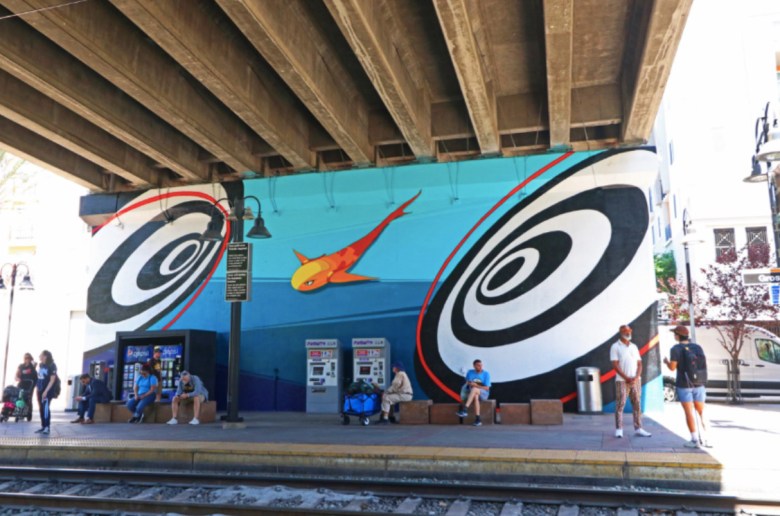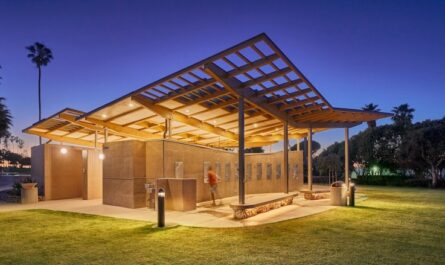The work of “street artists” is featured in locations throughout San Diego’s downtown and across the city, but not well understood or appreciated.
On buildings, vehicles, and the surface of public streets throughout the city, art lives and breathes in public consciousness. Often called graffiti by some, this is public art and is vitally important to communities in the new creative and innovative economy. Indeed, the
San Diego Tourism Authority
says “San Diego’s murals are a vivid window into the heart and soul of the city.”
In the last few years street art has grown into one of the fastest and largest art movements in America, if not worldwide, mainly appearing in urban areas on building walls, on overpasses, and bridges. They help define many neighborhoods and, in fact, the whole city.
The
Museum of Contemporary Art in San Diego
had an exhibition several years ago called “Viva la Revolución: A Dialogue with the Urban Landscape,” which hosted twenty artists from ten countries who were linked together by how their work addresses urban issues.
MCASD raised the bar with this exhibition, and in the process made it clear that the relationship between art, the artist and our communities tells the story of us. San Diego International Airport features several new pieces, and other works are also in progress in Beyer Park, East Village Green, Fairmont Avenue and Mira Mesa Community Park, to name a few.
From the Berlin Wall separating East and West Germany, to the “democracy wall” in Beijing, people have used street art to demonstrate some of their most poignant frustrations and concerns about the world.
Even in Afghanistan, street art, stencil art specifically, has popped up on several walls across Kabul over the past few years. Under the cover of night, artists take to the streets armed with stencils, spray paint and cameras. “The youth of Afghanistan,” said Shannon Galpin, president of Mountain2Mountain, a nonprofit that creates education and opportunity for women and girls in Afghanistan, “are finding their voice.”
A sense of life can be offered by street art as it adds character and complexity to what otherwise may be a boring place. In particular, when artists come together with civic and business leaders, they can create large scale works that completely reframe a space. In places such as Belfast, parts of the city that were once abandoned have now been transformed into art galleries and cultural hubs.
Street Art covers an extreme wide range of themes beyond the traditional graffiti and spray paint, although even graffiti can be creative and find its way into museums and art galleries. Just think of
Banksy
and Shepard Fairey, known for the Obama “Hope” poster.
Most graffiti consists of tagging, but frankly it’s mostly vandalism, criminal acts associated with gangs, petty crime, broken windows and a less attractive environment to live in. While also somewhat rebellious in nature, street art tends to convey a social or political message that provokes discussion and reaction. And for that reason it is often forbidden. But the benefit of street art in communities is to reduce dull, dirty environments. Instead of feeling dreary or uninterested, people walking through the city can become inspired and uplifted.
It also helps to stimulate the public, encouraging people to pay attention to the world around them and to engage with their environment rather than disconnect with their community. With the addition of art in our physical environments, the places where we work, learn and relax become enriched, opening our minds to new possibilities.
More and more cities are encouraging famous street artists to visit and leave their mark as a way to breathe new life into forgotten neighborhoods. And of course some of the art world’s biggest names (with the auction prices to match) now come from the world of street art.
Get neighborhood news in your inbox. It’s free and enlightening.
Join the 20,000+ people who get Times of San Diego in their inbox at 8 a.m. every day – plus breaking news alerts.
We’ve also added weekly updates from San Diego neighborhoods! By clicking sign up, you agree to the
terms
. Select below.
In Atlanta a group called “Living Walls” was invited by the city to literally paint the “sides of buildings, foreclosed houses and subway underpasses.” Living Walls’ goal is to showcase the creations, in aerosol and latex paint, of women from around the world, including Argentina, Brazil, Canada, Italy and Spain. The project, which includes lectures and parties celebrating street art, is also meant as an alternative to larger conferences, like Art Basel in Miami. Living Walls is now an annual event.
At the heart of this effort to spur creativity is recognition of the vital role that art and culture play in enhancing economic development, and ultimately, exploiting the vital links between art and science, culture and commerce. Cities, regions, indeed whole nations, must consciously invest in human and financial resources necessary to meet the challenges of the rapidly evolving knowledge economy and society.
Equally important for young people in particular is the need for a community that nurtures people’s creative instincts. People need to live and work and play in a community that itself is creative, that nurtures creativity, and gets us to think differently.
John Eger is professor emeritus in the School of Journalism and Media Studies at San Diego State University. Previously, he was legal assistant to FCC Chairman Dean Burch, telecommunications advisor to President Gerald R. Ford, and Senior Vice President of CBS Worldwide Enterprises.

 by
by 

